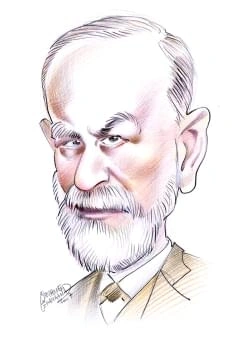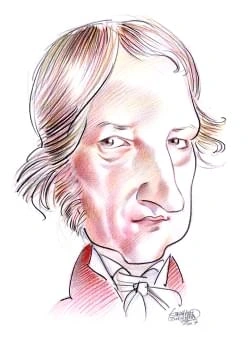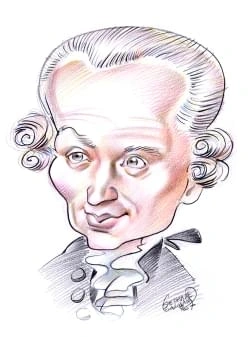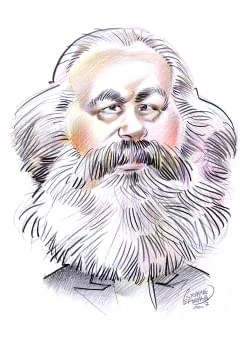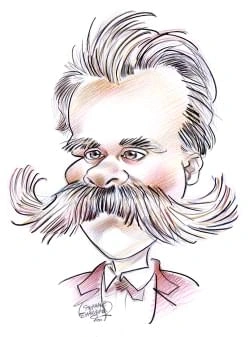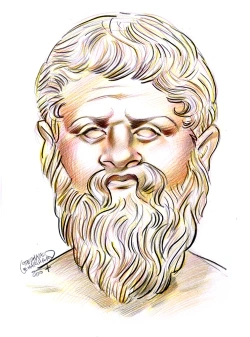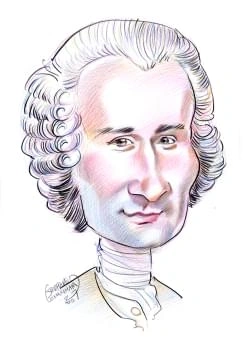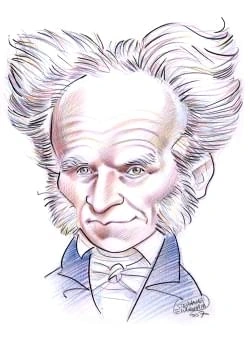284 résultats pour "university"
-
Australia - country.
itself forms most of the border between New South Wales and Victoria. Considerable lengths of the Murray, Darling, and Murrumbidgee rivers are navigable during thewet seasons. The central plains region, also known as the Channel Country, is interlaced by a network of rivers. During the rainy season these rivers flood the low-lying countryside,but in dry months they become merely a series of water holes. The Victoria, Daly, and Roper rivers drain a section of the Northern Territory. In Queensland...
-
Australia - Geography.
itself forms most of the border between New South Wales and Victoria. Considerable lengths of the Murray, Darling, and Murrumbidgee rivers are navigable during thewet seasons. The central plains region, also known as the Channel Country, is interlaced by a network of rivers. During the rainy season these rivers flood the low-lying countryside,but in dry months they become merely a series of water holes. The Victoria, Daly, and Roper rivers drain a section of the Northern Territory. In Queensland...
-
Burundi - country.
D Way of Life Most Burundians live in self-contained compounds of small round grass huts scattered over the country’s many hills. The rugo , the traditional Tutsi hut, is divided into sections and surrounded by an enclosure and cattle corrals. Families farm scattered plots of land on different soils at different altitudes to minimize crop failure. Thefloors of valleys are avoided due to higher temperatures and tsetse fly infestation. Social roles are largely determined by ethnicity, with the T...
-
Ontario - Geography.
governed Ontario’s initial settlement and development. The province’s most important river is the St. Lawrence. Its route was much improved and enlarged by dredgingand canal building in the mid-20th century. This enabled large ocean-going vessels to reach Great Lake ports ( see St. Lawrence Seaway). The Ottawa River was an important early route to the interior for fur traders and timber merchants. The Niagara River, because of its falls, is a great center of hydroelectric power as well as aninte...
-
Ontario - Canadian History.
governed Ontario’s initial settlement and development. The province’s most important river is the St. Lawrence. Its route was much improved and enlarged by dredgingand canal building in the mid-20th century. This enabled large ocean-going vessels to reach Great Lake ports ( see St. Lawrence Seaway). The Ottawa River was an important early route to the interior for fur traders and timber merchants. The Niagara River, because of its falls, is a great center of hydroelectric power as well as aninte...
-
Costa Rica - country.
protection from future deforestation is not guaranteed. Deforestation places Costa Rica’s rich biodiversity in danger. The country’s location on the cusp between Northand South America and its abundance of tropical forests make it home to a great variety of species, many of them rare and threatened. Deforestation also contributesto the country’s problematic rate of soil erosion. Costa Rica is party to international treaties concerning biodiversity, climate change ( see Global Warming), endangere...
-
Richard Nixon.
As President Eisenhower neared the end of his second term, his vice president emerged as his logical successor, and the president endorsed Nixon in March. Nixonreceived an impressive vote in party primaries, and at the Republican National Convention, held in Chicago in July, he received all but ten of the delegates’ votes on thefirst ballot. Nixon chose as his running mate the U.S. ambassador to the United Nations, Henry Cabot Lodge of Massachusetts. An unusual feature of the campaign wasa serie...
-
Richard Nixon
As President Eisenhower neared the end of his second term, his vice president emerged as his logical successor, and the president endorsed Nixon in March. Nixonreceived an impressive vote in party primaries, and at the Republican National Convention, held in Chicago in July, he received all but ten of the delegates’ votes on thefirst ballot. Nixon chose as his running mate the U.S. ambassador to the United Nations, Henry Cabot Lodge of Massachusetts. An unusual feature of the campaign wasa serie...
-
-
Reformation .
Saxony, he made war against the Schmalkaldic League, a defensive association of Protestant princes. The Roman Catholic forces were successful at first. Later,however, Duke Maurice went over to the Protestant side, and Charles V was obliged to make peace. The religious civil war ended with the religious Peace of Augsburg in1555. Its terms provided that each of the rulers of the German states, which numbered about 300, choose between Roman Catholicism and Lutheranism and enforcethe chosen faith up...
-
Canada.
Six general landform regions are distinguishable in Canada: the Appalachian Region, the Great Lakes and St. Lawrence Lowlands, the Canadian Shield, the Great Plains,the Canadian Cordillera, and the Canadian Arctic Archipelago. B1 Appalachian Region and Great Lakes and St. Lawrence Lowlands Eastern Canada consists of the Appalachian Region and the Great Lakes and St. Lawrence Lowlands. The Appalachian Region embraces Newfoundland Island, NovaScotia, New Brunswick, Prince Edward Island, and the G...
-
Canada - country.
Six general landform regions are distinguishable in Canada: the Appalachian Region, the Great Lakes and St. Lawrence Lowlands, the Canadian Shield, the Great Plains,the Canadian Cordillera, and the Canadian Arctic Archipelago. B1 Appalachian Region and Great Lakes and St. Lawrence Lowlands Eastern Canada consists of the Appalachian Region and the Great Lakes and St. Lawrence Lowlands. The Appalachian Region embraces Newfoundland Island, NovaScotia, New Brunswick, Prince Edward Island, and the G...
-
Canada - Canadian History.
Six general landform regions are distinguishable in Canada: the Appalachian Region, the Great Lakes and St. Lawrence Lowlands, the Canadian Shield, the Great Plains,the Canadian Cordillera, and the Canadian Arctic Archipelago. B1 Appalachian Region and Great Lakes and St. Lawrence Lowlands Eastern Canada consists of the Appalachian Region and the Great Lakes and St. Lawrence Lowlands. The Appalachian Region embraces Newfoundland Island, NovaScotia, New Brunswick, Prince Edward Island, and the G...
-
Honduras - country.
A Principal Cities The capital and largest city of Honduras is Tegucigalpa (2006 estimate, 1,324,000), located in the south-central highlands region. The country’s second largest city isSan Pedro Sula (549,498). The principal city and commercial center in the north, it lies in the heart of the vast banana plantations on the Caribbean Sea. La Ceiba(127,590) and Puerto Cortés (90,161) are among the leading Caribbean ports. B Language and Religion Spanish is the official language and is spoken by...
-
Arkansas - geography.
temperature rises to the upper 30°s C (lower 100°s F). C2 Precipitation Arkansas receives about 1,000 to 1,300 mm (about 40 to 50 in) of precipitation a year, and some areas receive even more. Most of the rain comes during winter andspring and at times is so heavy as to cause flooding. Snow is rare in the south but amounts to more than 250 mm (10 in) a year in the mountains. C3 Growing Season Arkansas has a long growing season. It averages 211 days for the state as a whole and ranges from 241...
-
Arkansas - USA History.
temperature rises to the upper 30°s C (lower 100°s F). C2 Precipitation Arkansas receives about 1,000 to 1,300 mm (about 40 to 50 in) of precipitation a year, and some areas receive even more. Most of the rain comes during winter andspring and at times is so heavy as to cause flooding. Snow is rare in the south but amounts to more than 250 mm (10 in) a year in the mountains. C3 Growing Season Arkansas has a long growing season. It averages 211 days for the state as a whole and ranges from 241...
-
Libya - country.
junipers and mastic trees are found in the higher elevations. Only a few large mammals are found in Libya. Wildlife includes desert rodents, hyenas, gazelles, and wildcats. Eagles, hawks, and vultures are common. E Environmental Issues Libya has undertaken a number of major irrigation projects intended to ease the country’s water shortage. The most ambitious is the so-called Great Man-Made River(GMMR), a massive 25-year irrigation scheme begun in 1984. The GMMR is a vast water pipeline system d...
-
-
Egypt - country.
Egypt has a wide variety of mineral deposits, some of which, such as gold and red granite, have been exploited since ancient times. The chief mineral resource ofcontemporary value is petroleum, found mainly in the Red Sea coastal region, at Al ‘Alamayn (El ‘Alamein) on the Mediterranean, and on the Sinai Peninsula. Otherminerals include phosphates, manganese, iron ore, and uranium. Natural gas is also extracted. D Plants and Animals The vegetation of Egypt is confined largely to the Nile Delta,...
-
India - country.
delta in the north, are intensely farmed. B Rivers and Lakes The rivers of India can be divided into three groups: the great Himalayan rivers of the north, the westward-flowing rivers of central India, and the eastward-flowingrivers of the Deccan Plateau and the rest of peninsular India. Only small portions of India’s rivers are navigable because of silting and the wide seasonal variation inwater flow (due to the monsoon climate). Water transport is thus of little importance in India. Barrages,...
-
Wisconsin (state) - geography.
-6° C (22° F) in the southeast, along the Lake Michigan shore. During winter extremely cold weather persists for several weeks at a time. C2 Precipitation Average annual precipitation ranges from 700 to 800 mm (28 to 32 in). Rainfall is generally heaviest during the spring and summer, and snowfall is generally moderatein the south, but can be quite heavy in the north. Thunderstorms, sometimes accompanied by devastating tornadoes, are common in spring and summer, particularly inthe southern part...
-
Wisconsin (state) - USA History.
-6° C (22° F) in the southeast, along the Lake Michigan shore. During winter extremely cold weather persists for several weeks at a time. C2 Precipitation Average annual precipitation ranges from 700 to 800 mm (28 to 32 in). Rainfall is generally heaviest during the spring and summer, and snowfall is generally moderatein the south, but can be quite heavy in the north. Thunderstorms, sometimes accompanied by devastating tornadoes, are common in spring and summer, particularly inthe southern part...
-
Belarus - country.
In the last complete census conducted in the Soviet Union in 1989, the population of Belarus was 10,151,806; a 2008 estimate was 9,685,768, giving the country apopulation density of 47 persons per sq km (121 per sq mi). The most notable demographic trend since the 1950s has been the steady migration of the population fromthe villages to urban centers, and the correspondent aging of the population remaining in the rural areas. In 1959 urban residents accounted for 31 percent of thepopulation; in...
-
African American History - U.
In their day-to-day lives, slaves and servants shared similar grievances and frequently formed alliances. Advertisements seeking the return of slaves and servants whohad run away together filled colonial newspapers. When a slave named Charles escaped in 1740, the Pennsylvania Gazette reported that two white servants, a 'Scotch man' and an Englishman, escaped with him. Sometimes interracial alliances involved violence. During Bacon's Rebellion in 1676, slaves and servants took up armsagainst Na...
-
Guatemala - country.
C Climate The climate of Guatemala varies according to elevation, from hot coastal plains to cold mountain heights. Most of the population lives between 900 and 2,400 m (3,000and 8,000 ft) above sea level, where there are warm days and cool nights with average annual temperatures of 20°C (68°F). The coastal regions are hot and humid,with average annual temperatures of 28°C (83°F). A rainy season, from May through October, is sometimes called “winter” because it brings cloudy afternoons andlower...
-
Cuba - country.
Only two land mammals, the hutia, or cane rat, and the solenodon, a rare insectivore that resembles a rat, are known to be indigenous. The island has numerous batsand nearly 300 kinds of birds, including vultures, wild turkeys, quail, finches, gulls, macaws, parakeets, and hummingbirds. The bee hummingbird of Cuba is thesmallest bird in the world. Among the few reptiles are tortoises, caimans, the Cuban crocodile, and a species of boa that can attain a length of 3.7 m (12 ft). More than700 speci...
-
-
La Psychiatrie est elle une science?
distinguish science from non-science. Philosophers of science now generally agree that the search for a demarcation criterion has failed. However, in other disciplines the search for a means of distinguishing science from pseudoscience continues. I review the current debate in psychology and psychiatry. Then, returning to philosophical work, I discuss and support accounts according to which 'science' is best considered a family resemblance term. This suggests that whether psychiatric research is...
-
Albania - country.
Joining the international community in its concern over the degradation of the environment, Albania is party to international agreements concerning biodiversity, climatechange, and wetlands. III THE PEOPLE OF ALBANIA In 2008 Albania’s population estimate was 3,619,778, resulting in an average density of 132 persons per sq km (342 per sq mi). More and more people have left ruralareas for urban ones, particularly in the northern districts, such that in 2005 some 45 percent of the population live...
-
China - country.
North China lies between the Mongolian Steppe on the north and the Yangtze River Basin on the south. It stretches west from the Bo Hai gulf and the Yellow Sea to theeastern edge of the Tibetan Plateau. Administratively, North China includes Beijing and Tianjin municipalities; Shandong and Shanxi provinces; most of Hebei, Henan,and Shaanxi provinces; and portions of Ningxia Hui Autonomous Region and of Jiangsu, Anhui, and Gansu provinces. Humans have lived in the agriculturally rich region of Nor...
-
Thailand - country.
E Natural Resources Thailand possesses a range of mineral resources. Tin is mined in the peninsula. Important gemstones, such as sapphires, are found in the southeast, and coal reserves,particularly lignite, are in the north. Fish are abundant in rivers and coastal waters. In addition to being consumed domestically, fish are also exported. F Climate Thailand experiences a typical monsoon climate. Winds blow from the northeast during the winter months of October to March or April (known as the...
-
American Literature: Poetry
I
INTRODUCTION
Phyllis McGinley
American poet and author Phyllis McGinley composed light, witty verse, much of which deals with family life.
Taylor, a poet of great technical skill, wrote powerful meditative poems in which he tested himself morally and sought to identify and root out sinful tendencies. In“God's Determinations Touching His Elect” (written 1680?), one of Taylor’s most important works, he celebrates God's power in the triumph of good over evil in thehuman soul. All of Taylor’s poetry and much of Bradstreet’s served generally personal ends, and their audience often consisted of themselves and their family andclosest frie...
-
Missouri - geography.
Saint Francois Mountains, at the eastern end of the crest of the dome. Only in these mountains have the sedimentary rocks been sufficiently eroded away so that theunderlying igneous rocks are exposed. They form the rounded, knoblike peaks of an old mountain range. The peaks project, in isolation or in clusters, between 230 and300 m (750 and 1,000 ft) above the surrounding sedimentary basins. One of these knobs, Taum Sauk Mountain, reaches 540 m (1,772 ft) above sea level and is thehighest point...
-
Missouri - USA History.
Saint Francois Mountains, at the eastern end of the crest of the dome. Only in these mountains have the sedimentary rocks been sufficiently eroded away so that theunderlying igneous rocks are exposed. They form the rounded, knoblike peaks of an old mountain range. The peaks project, in isolation or in clusters, between 230 and300 m (750 and 1,000 ft) above the surrounding sedimentary basins. One of these knobs, Taum Sauk Mountain, reaches 540 m (1,772 ft) above sea level and is thehighest point...
-
Federal Republic of Germany - country.
B Rivers and Lakes Rivers have played a major role in Germany’s economic development. The Rhine River flows in a northwesterly direction from Switzerland through much of westernGermany and The Netherlands into the North Sea. It is a major European waterway and a pillar of commerce and trade. Its primary German tributaries include theMain, Mosel, Neckar, and Ruhr rivers. The Oder (Odra) River, along the border between Poland and Germany, runs northward and empties into the Baltic; it provides an...
-
-
Massachusetts - geography.
mi). Other large artificial lakes include Wachusett Reservoir, East Brimfield Reservoir, and Cobble Mountain Reservoir. Assawompsett Pond, covering about 10 sq km(about 4 sq mi), is the largest natural lake. North Watuppa Pond and Long Pond are other large natural lakes. Lake Chaubunagungamaug, near Webster, is usuallycalled Webster Lake, because the Algonquian name is difficult to pronounce and spell. The full version of the Native American name is said to be the longest place-namein North Amer...
-
United Kingdom - country.
B Natural Regions and Topography The island of Great Britain can be divided into two major natural regions—the highland zone and the lowland zone. The highland zone is an area of high hills andmountains in the north and west. The lowland zone in the south and east consists mostly of rolling plains. The zones are divided by an imaginary line running throughEngland from the River Exe on the southwest coast to the mouth of the River Tees on the northeast coast. The lowland zone has a milder climat...
}})
